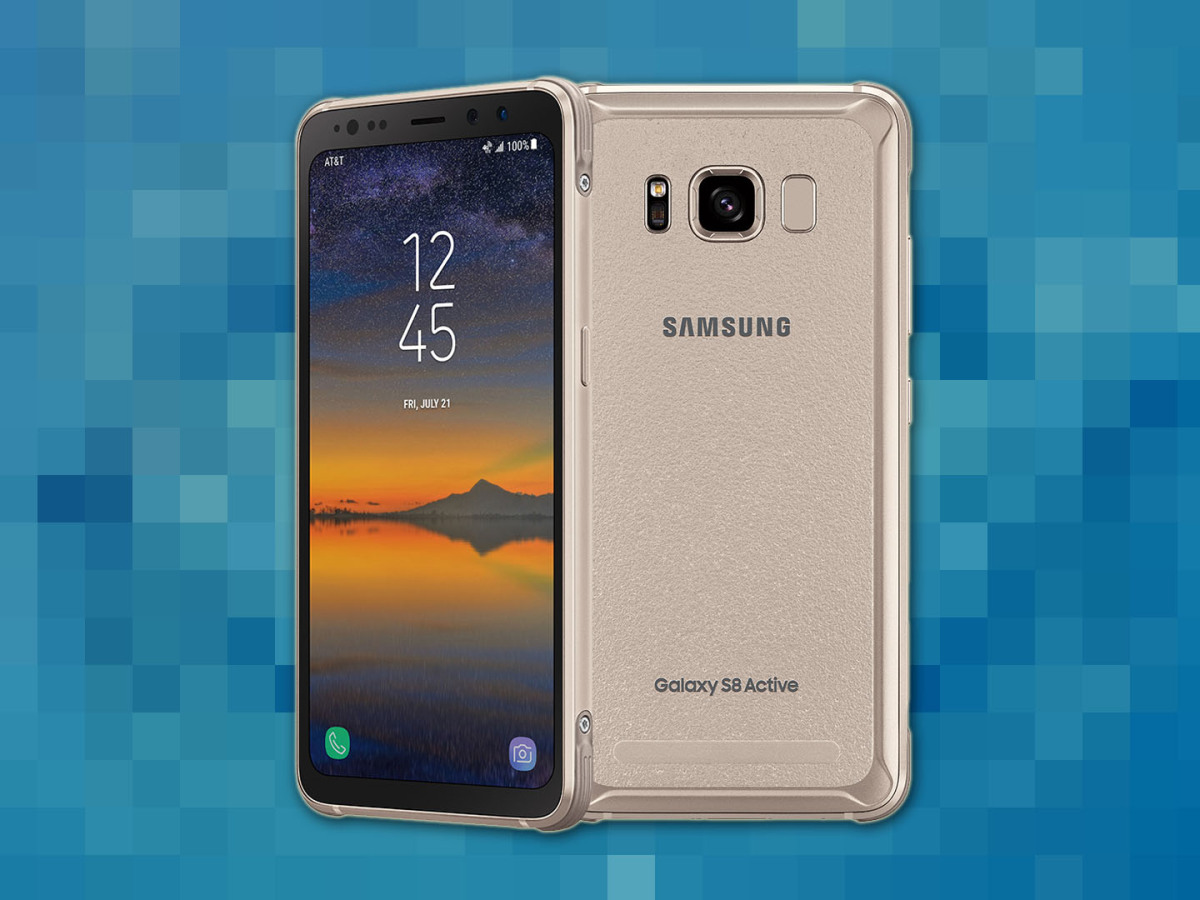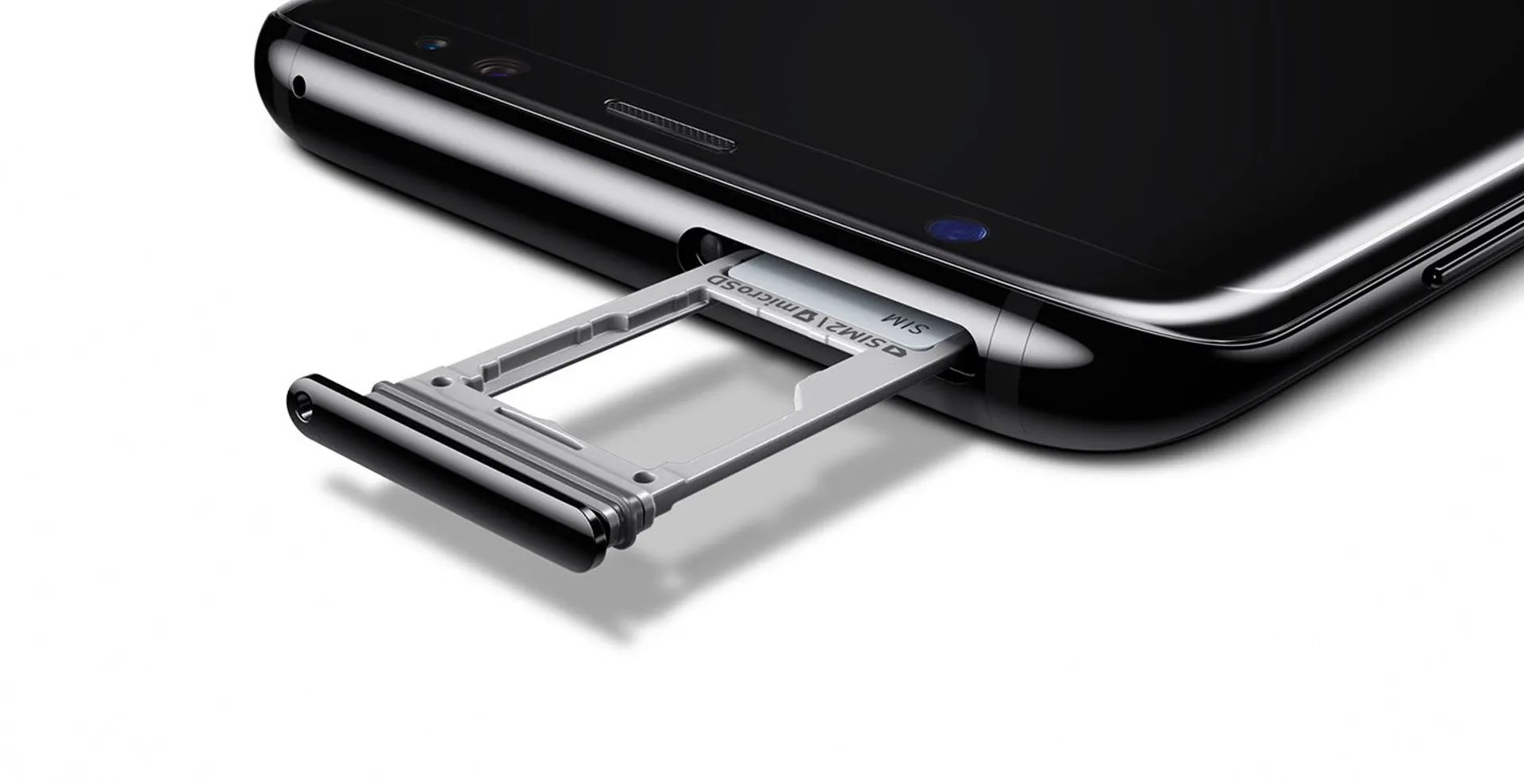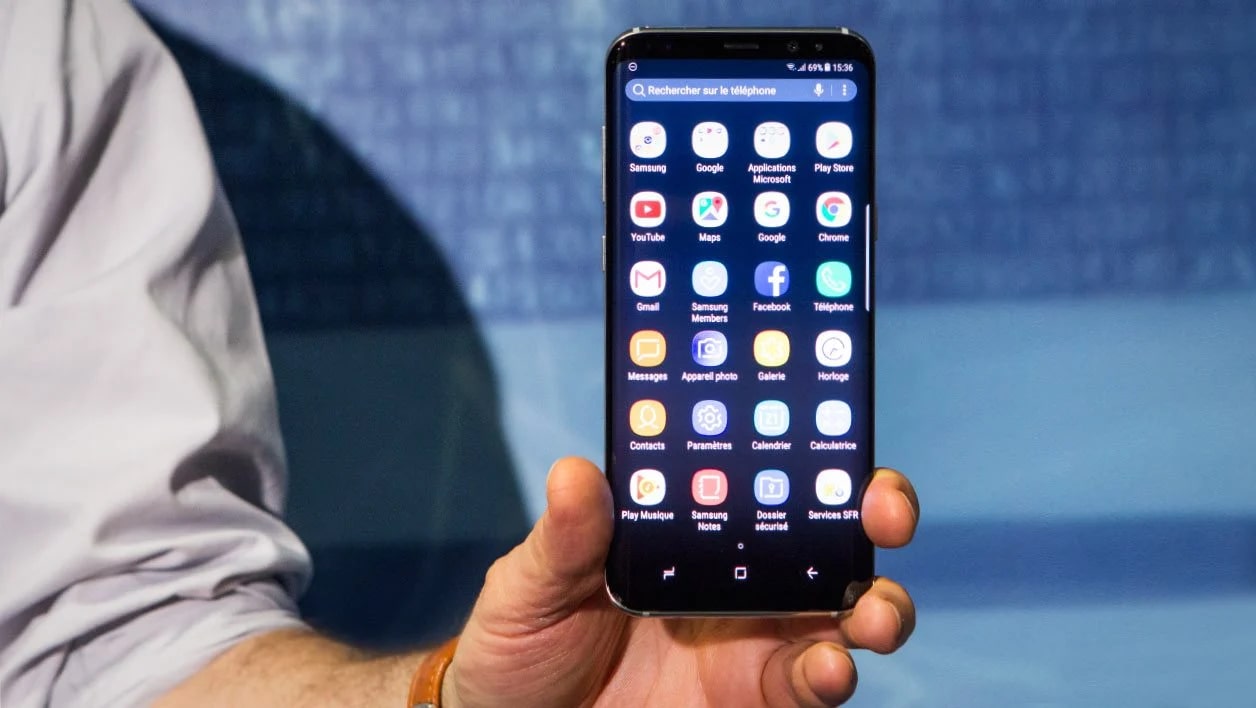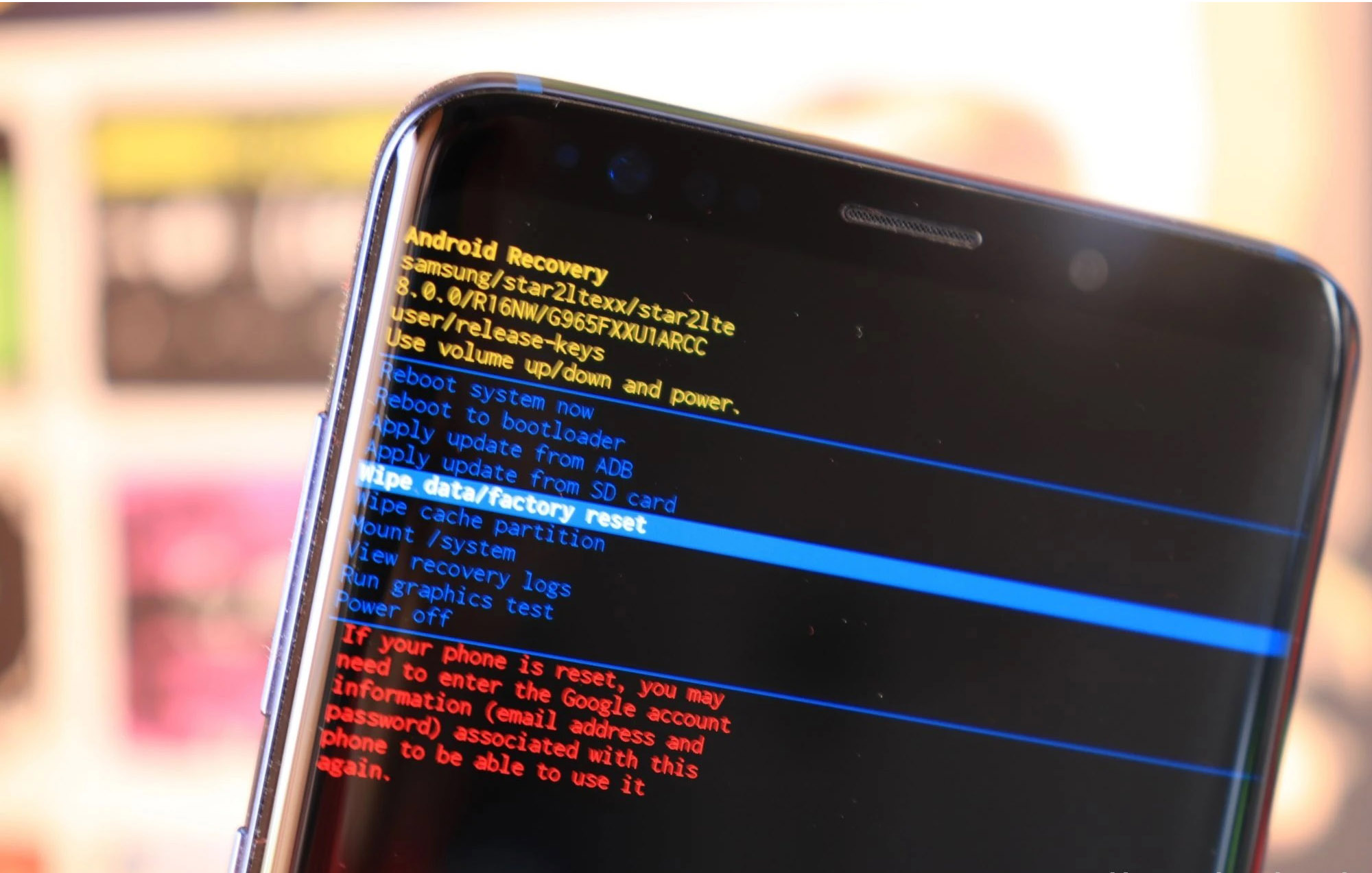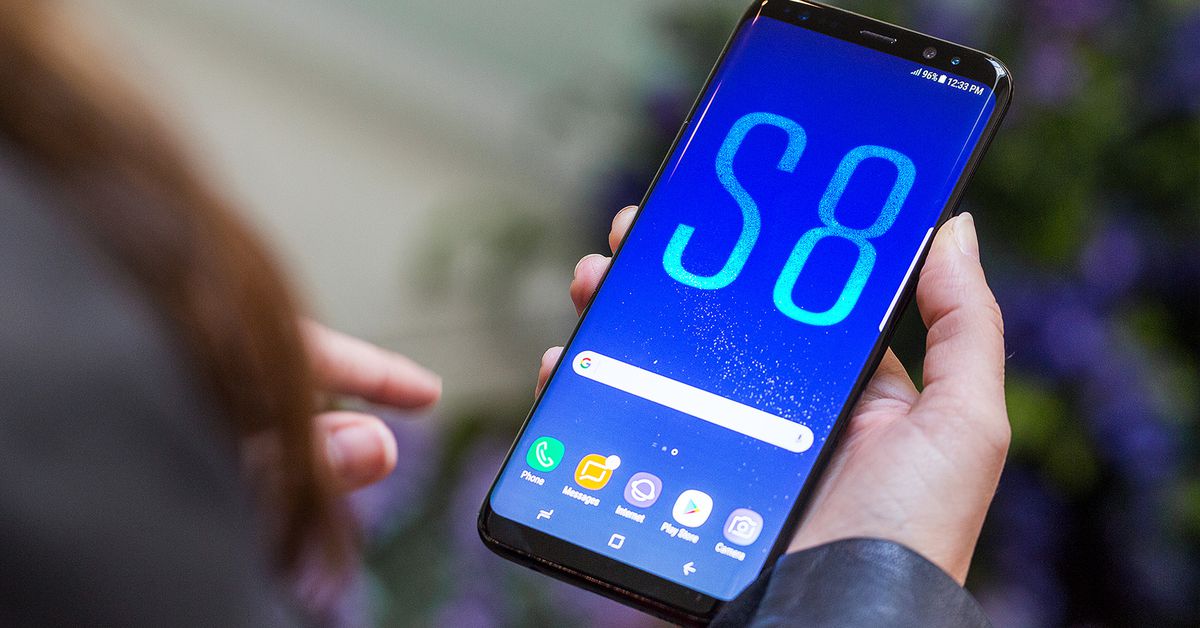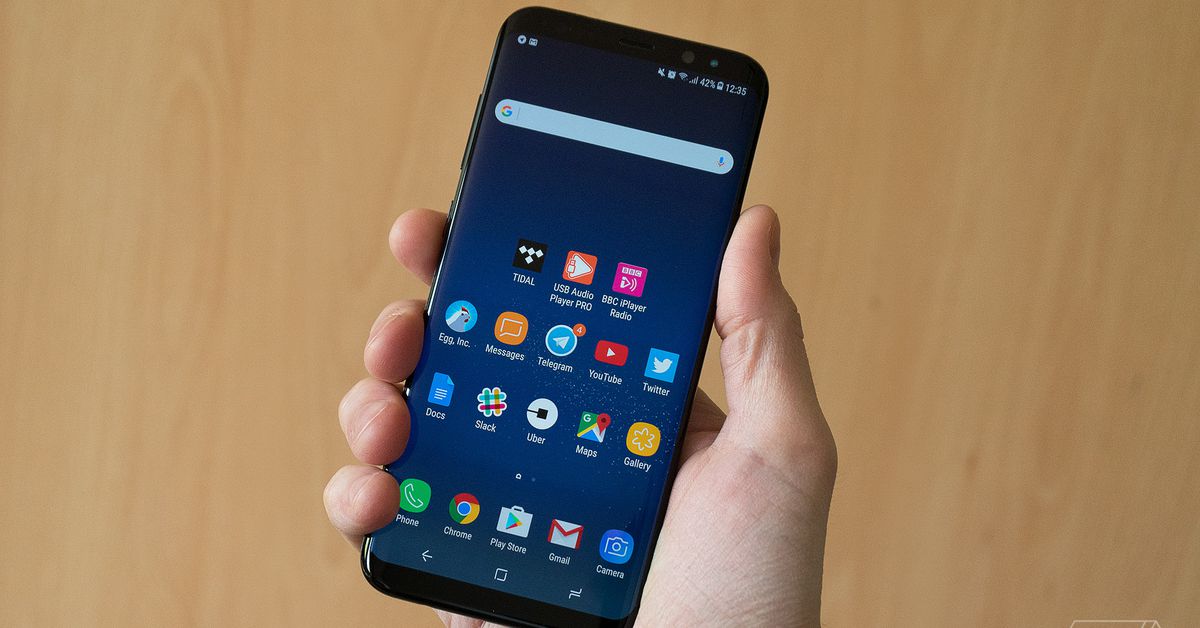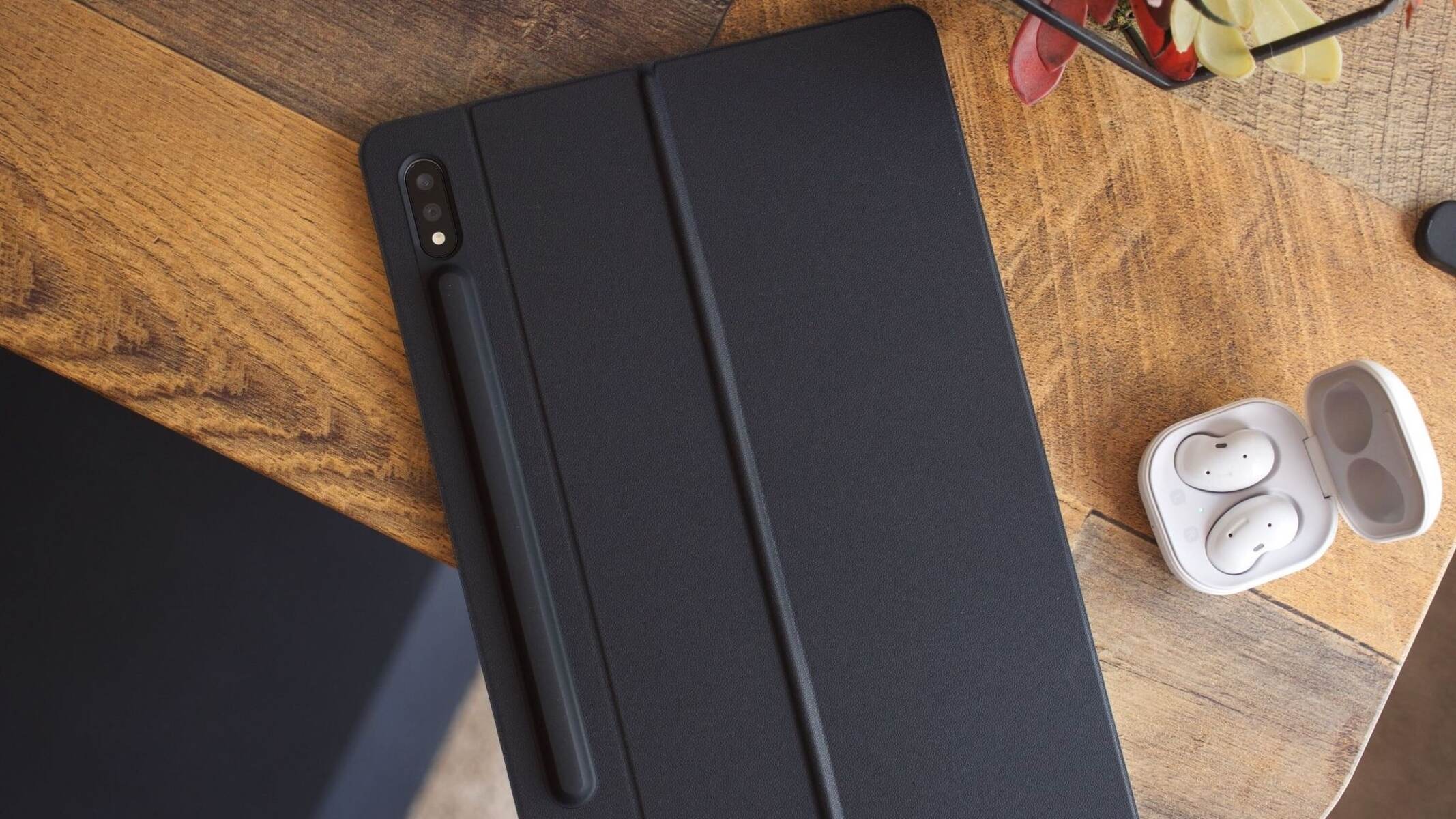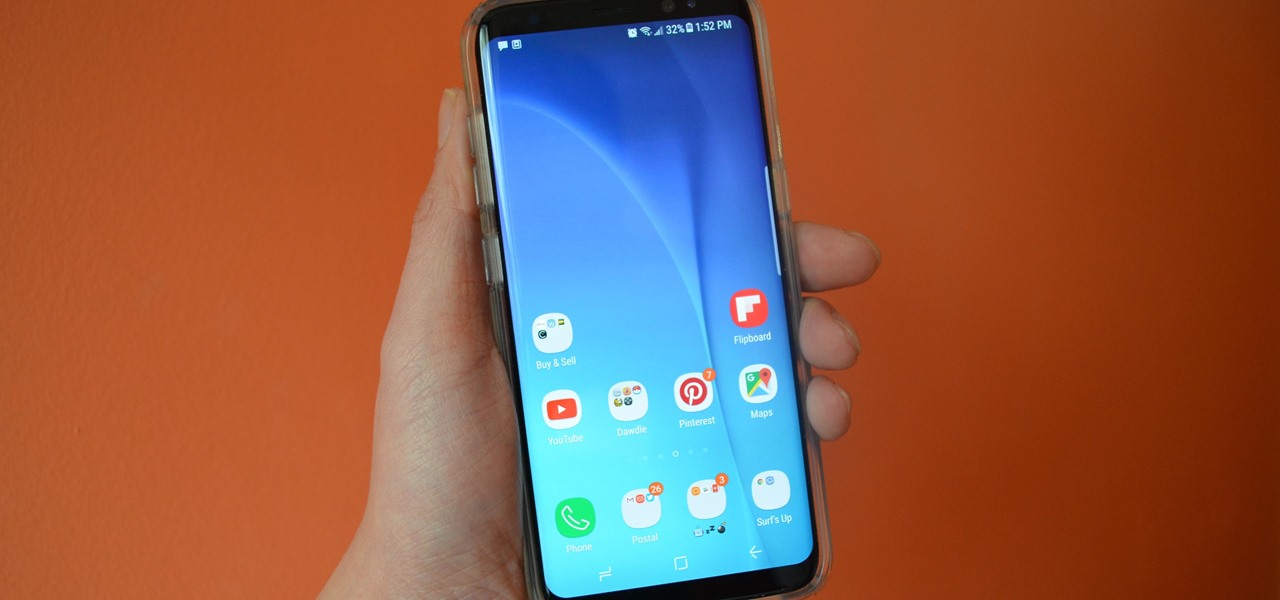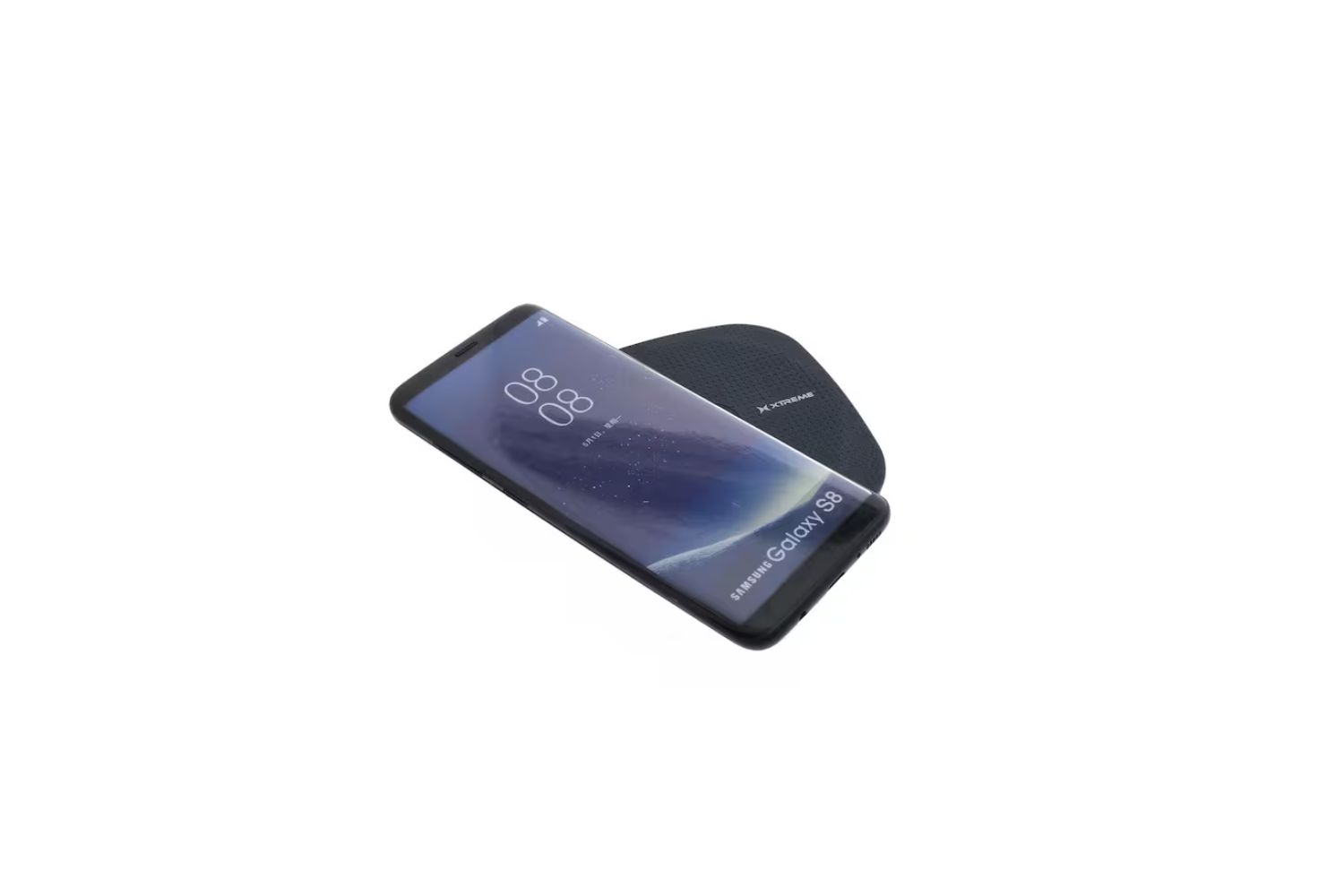Introduction
The Samsung Galaxy S8 was one of the most highly anticipated smartphones in recent years. As the successor to the popular Galaxy S7, this flagship device was expected to push the boundaries of innovation and set new standards for mobile technology. With its sleek design, powerful specifications, and advanced features, the Galaxy S8 aimed to revolutionize the smartphone industry.
When Samsung introduced the Galaxy S8 to the world, it generated a significant amount of buzz and excitement among tech enthusiasts and consumers alike. The announcement took place in March 2017, during a special event in New York City. The event showcased the groundbreaking features of the Galaxy S8 and highlighted the company’s commitment to delivering cutting-edge technology.
With the Galaxy S8, Samsung aimed to redefine the smartphone experience. From its infinity display to its enhanced camera capabilities, the device boasted a range of features that made it stand out from its competitors. The launch of the Galaxy S8 was seen as a turning point for Samsung, as the company aimed to rebuild trust and regain its position as a leader in the smartphone market.
In this article, we will delve into the details surrounding the release of the Samsung Galaxy S8. We will explore its specifications, design, camera capabilities, performance, and software, among other aspects. Furthermore, we will analyze how the Galaxy S8 compares to its predecessors and discuss its pricing and availability. So, let’s dive into the world of Samsung’s innovative flagship device and discover when the Galaxy S8 came out and what it had to offer.
The Announcement of the Samsung Galaxy S8
In March 2017, Samsung held a highly anticipated event in New York City to announce the Galaxy S8. The event, which garnered immense media attention, showcased Samsung’s commitment to pushing the boundaries of smartphone technology.
At the announcement, Samsung unveiled the flagship Galaxy S8 and its larger variant, the Galaxy S8+. The devices showcased Samsung’s new design philosophy, featuring the stunning “Infinity Display” that stretched from edge to edge, offering users an unbelievably immersive viewing experience. The elimination of the physical home button allowed for a larger screen-to-body ratio, making the Galaxy S8 feel more like a sheet of glass in hand.
The announcement also showcased the improved camera capabilities of the Galaxy S8. The device featured a 12-megapixel primary camera with an f/1.7 lens, as well as an 8-megapixel front-facing camera. Samsung highlighted the enhanced low-light photography capabilities and the ability to capture vivid and crisp images in various lighting conditions.
One of the most talked-about features introduced at the event was the integration of an intelligent virtual assistant known as Bixby. Samsung’s answer to Apple’s Siri and Google Assistant, Bixby aimed to provide a seamless and intuitive way to interact with the Galaxy S8 through voice commands and gestures.
The announcement event also showcased the powerful performance of the Galaxy S8, powered by the latest Qualcomm Snapdragon 835 processor or Samsung’s own Exynos 8895 chipset, depending on the market. The device boasted ample RAM and storage options, ensuring smooth multitasking and the ability to store a vast amount of media and applications.
Samsung also emphasized the advanced security features of the Galaxy S8. The device featured a rear-mounted fingerprint sensor, along with various biometric authentication options such as iris scanning and facial recognition. These features aimed to provide users with a higher level of security and convenience while accessing their device and personal information.
Overall, the announcement of the Samsung Galaxy S8 left tech enthusiasts and consumers impressed with the device’s revolutionary design, powerful specifications, advanced camera capabilities, and integrated virtual assistant. The event set the stage for the highly anticipated release of the Galaxy S8 and raised expectations for Samsung’s flagship smartphone.
The Release Date of the Samsung Galaxy S8
After the much-anticipated announcement, Samsung fans eagerly awaited the release date of the Galaxy S8. The company aimed to bring the device to market as soon as possible to capitalize on the excitement generated by its unveiling.
The Samsung Galaxy S8 hit the shelves on April 21, 2017. The release was a global event, with the device being made available in numerous countries around the world on the same day. The simultaneous release ensured that customers across different regions could experience the Galaxy S8’s cutting-edge technology without delay.
Prior to the official release date, Samsung offered pre-order options to customers, allowing them to secure their devices before they became available to the general public. This strategy was met with great enthusiasm, as eager customers jumped at the opportunity to be among the first to own the highly anticipated flagship smartphone.
The release of the Galaxy S8 marked a significant moment for Samsung, as the company looked to regain consumer trust following the recall of the Galaxy Note 7 the previous year. Samsung invested heavily in marketing and ensured a smooth and successful roll-out of the Galaxy S8 to rebuild confidence in its brand.
Carriers and retailers worldwide partnered with Samsung to promote and distribute the Galaxy S8, offering various deals and incentives to entice customers. The device was made available through both online and offline channels, ensuring accessibility for consumers of different preferences.
As the release date approached, the excitement and anticipation for the Galaxy S8 reached a fever pitch. Fans lined up outside stores, eagerly awaiting their chance to get their hands on the highly coveted device. The Galaxy S8 proved to be a major success for Samsung, with initial sales exceeding expectations.
The release of the Galaxy S8 set a new standard for flagship smartphones, with its innovative features and sleek design garnering widespread acclaim from critics and consumers alike. It showcased Samsung’s dedication to pushing boundaries and solidified its position as a leader in the smartphone market.
In the next sections, we will delve deeper into the specifications, design, camera capabilities, performance, software, pricing, and availability of the Samsung Galaxy S8, providing a comprehensive overview of the device and its impact on the industry.
Specifications and Features of the Samsung Galaxy S8
The Samsung Galaxy S8 boasted impressive specifications and a range of innovative features, setting a new benchmark for flagship smartphones. From its stunning display to its powerful performance capabilities, the Galaxy S8 offered users an exceptional mobile experience.
At the heart of the Galaxy S8 was its vibrant “Infinity Display.” The device featured a 5.8-inch Quad HD+ Super AMOLED display with a resolution of 2960 x 1440 pixels. The Infinity Display had minimal bezels, resulting in a stunning edge-to-edge screen that offered immersive visuals and a wider viewing area compared to previous Samsung devices.
Under the hood, the Galaxy S8 was powered by either the Qualcomm Snapdragon 835 or Samsung’s own Exynos 8895 processor, depending on the region. Both configurations provided smooth and efficient performance, enabling seamless multitasking, gaming, and media consumption.
In terms of memory and storage, the Galaxy S8 offered 4GB of RAM and 64GB of internal storage, with the option to expand the storage further using a microSD card. The ample storage space allowed users to store a large number of photos, videos, apps, and files on their device without worrying about running out of space.
The camera capabilities of the Galaxy S8 were truly impressive. The device featured a 12-megapixel rear camera with an f/1.7 lens, optical image stabilization, and phase detection autofocus, allowing users to capture high-quality photos with ease. The camera performed exceptionally well in low-light conditions, producing sharp and detailed images. On the front, the Galaxy S8 sported an 8-megapixel camera for stunning selfies and video calls.
Another standout feature of the Galaxy S8 was its enhanced security options. The device offered various biometric authentication methods, including iris scanning and facial recognition. These features provided an extra layer of security and convenience, allowing users to unlock their device and authenticate payments with a simple glance.
The Galaxy S8 also introduced Bixby, Samsung’s virtual assistant. With Bixby, users could execute tasks through voice commands and interact with their device in a more intuitive manner. Bixby aimed to understand natural language and context to provide personalized recommendations and tailored experiences for each user.
Other notable features of the Galaxy S8 included a water and dust resistance rating of IP68, fast charging capabilities, wireless charging support, and a 3,000mAh battery that offered all-day usage. The device ran on Android 7.0 Nougat, with Samsung’s custom user interface, providing a seamless and user-friendly experience.
Overall, the Galaxy S8 packed powerful specifications and a host of innovative features, making it a formidable contender in the smartphone market. Its stunning display, impressive camera capabilities, and advanced security options set a new standard for flagship devices and solidified Samsung’s reputation as a leader in mobile technology.
Design and Display of the Samsung Galaxy S8
The design and display of the Samsung Galaxy S8 set a new standard for smartphone aesthetics. With its stunning Infinity Display and sleek form factor, the Galaxy S8 captivated users with its visually striking appearance.
The standout feature of the Galaxy S8 was its Infinity Display, a curved, edge-to-edge screen that seamlessly blended into the device’s metal and glass body. The result was a bezel-less display that maximized screen real estate and offered a truly immersive viewing experience. The Galaxy S8 featured a 5.8-inch Quad HD+ Super AMOLED display with a resolution of 2960 x 1440 pixels. The vibrant colors, deep blacks, and sharpness of the display made video playback, gaming, and web browsing a visually captivating experience.
In addition to its stunning display, the Galaxy S8 boasted a sleek and elegant design. The device featured a glass back panel that curved gently into the metal frame, producing a seamless and premium feel. The minimalist design, with a lack of physical buttons on the front, contributed to the device’s sleek appearance and all-screen display.
The placement and ergonomics of buttons and ports were well thought out. The volume and power buttons were located on the left and right sides of the device, respectively, making them easily accessible. The USB Type-C port and 3.5mm headphone jack were positioned at the bottom, allowing for convenient charging and audio connectivity. At the rear, the fingerprint sensor was intelligently placed near the camera, ensuring easy reachability.
The Galaxy S8 was also available in a range of attractive color options, including Midnight Black, Orchid Gray, Arctic Silver, Coral Blue, and Maple Gold. These options allowed users to choose a device that matched their personal style and preferences.
In terms of durability, the Galaxy S8 featured an IP68 rating, making it water and dust resistant. This ensured that the device could withstand spills, splashes, and dust without compromising its functionality.
The design and display of the Galaxy S8 showcased Samsung’s commitment to creating a device that was not only technologically advanced but also visually appealing. The Infinity Display and sleek design made the Galaxy S8 a true flagship device that stood out in a saturated market.
Camera and Photography Capabilities
The camera and photography capabilities of the Samsung Galaxy S8 were highly impressive, allowing users to capture stunning photos and videos with ease. The device incorporated advanced camera technology and a range of innovative features to enhance the overall photography experience.
The Galaxy S8 featured a 12-megapixel rear camera with a large f/1.7 aperture lens, optical image stabilization, and phase detection autofocus. This combination allowed the camera to capture sharp and detailed images even in low-light conditions. The presence of optical image stabilization ensured that photos remained steady, reducing motion blur and improving the overall clarity of the images.
The camera app of the Galaxy S8 offered a wide range of shooting modes and settings to cater to different photography needs. From Pro mode, which offered manual controls for advanced users, to the food mode, which enhanced food photography, the device had options to capture various subjects in the best possible way.
One of the key highlights of the Galaxy S8’s camera was its low-light photography capabilities. The large aperture lens and efficient image processing algorithms allowed for brighter and more vibrant photos in challenging lighting conditions. The camera was also equipped with multi-frame image processing, which combined multiple shots to create a single, noise-free image with enhanced sharpness.
In addition to still photography, the Galaxy S8 offered impressive video recording capabilities. The rear camera could record 4K Ultra HD videos at 30 frames per second, ensuring high-quality footage with excellent detail and clarity. The camera also supported slow-motion video recording at 240 frames per second, allowing users to capture stunning slow-motion footage for creative and dramatic effect.
The front-facing camera of the Galaxy S8 was an 8-megapixel shooter with an f/1.7 lens. It produced clear and vibrant selfies, perfect for social media sharing and video calls. The wide-angle lens allowed users to fit more people into a selfie or capture more of the background, providing a greater range of creative options.
Samsung also integrated various camera features into the Galaxy S8 to enhance the overall photography experience. This included a built-in photo editor that allowed users to make quick edits and enhancements to their photos without the need for external software. Additionally, features such as selective focus, panorama mode, and HDR (High Dynamic Range) ensured that users had the flexibility and tools to capture breathtaking images in different scenarios.
Overall, the camera and photography capabilities of the Samsung Galaxy S8 were top-notch. With its advanced hardware and software features, the device allowed users to capture stunning photos and videos in a wide range of conditions, making it a go-to choice for photography enthusiasts and casual users alike.
Performance and Battery Life
The Samsung Galaxy S8 was powered by a high-performing processor and packed ample memory, resulting in a smooth and efficient user experience. The device delivered impressive performance, allowing users to accomplish tasks quickly and effortlessly.
Depending on the region, the Galaxy S8 was equipped with either the Qualcomm Snapdragon 835 or Samsung’s in-house Exynos 8895 processor. Both configurations were capable of handling demanding tasks and offering seamless multitasking capabilities. The processors were built on advanced technology, providing efficient power consumption and blazing-fast speeds.
With 4GB of RAM, the Galaxy S8 offered ample memory for smooth multitasking, ensuring that users could switch between apps and processes without any lag or slowdown. Whether it was running graphics-intensive games or juggling multiple applications simultaneously, the device showcased its ability to handle the task at hand with ease.
In terms of storage capacity, the Galaxy S8 came with 64GB of internal storage, providing ample space for storing photos, videos, apps, and files. Furthermore, the device supported expandable storage through a microSD card slot, allowing users to easily add more storage as needed.
Battery life was a crucial aspect for smartphone users, and the Galaxy S8 did not disappoint in this department. The device was equipped with a 3,000mAh non-removable battery, which offered all-day usage for most users. The efficient power management implemented in the device allowed for longer screen-on times and reduced power consumption during idle periods.
In addition to its sizable battery, the Galaxy S8 supported fast charging capabilities. With the included Adaptive Fast Charging adapter, users could quickly recharge their device, minimizing downtime and ensuring they had sufficient power when needed. The device also supported wireless charging, allowing users to conveniently charge their device by simply placing it on a compatible wireless charging pad.
Samsung also implemented various power-saving features in the Galaxy S8 to optimize battery life. This included options to limit background processes, adjust screen resolution, and enable power-saving modes when necessary. These features offered users greater control over their device’s power consumption and extended the battery life even further.
Overall, the Samsung Galaxy S8 delivered exceptional performance and reliable battery life. Whether it was the seamless multitasking, the smooth operation of resource-intensive applications, or the all-day battery life, the device demonstrated its ability to meet the demands of modern smartphone users.
Software and User Interface
The Samsung Galaxy S8 ran on the Android operating system, customized with Samsung’s own user interface known as Samsung Experience. This combination provided users with a feature-rich and user-friendly software experience.
The Galaxy S8 came pre-installed with Android 7.0 Nougat, offering a refined interface and a host of new features. This included improved multitasking capabilities, enhanced notifications, and a more efficient power-saving mode. The device also received subsequent software updates, ensuring that users had access to the latest features and security patches.
One of the defining features of the Galaxy S8’s software was the integration of Samsung’s virtual assistant, Bixby. Bixby aimed to provide a more intuitive way for users to interact with their device through voice commands, gestures, and contextual understanding. Users could use Bixby to perform tasks, retrieve information, and get personalized recommendations.
The user interface of the Galaxy S8 was designed to be visually appealing and user-friendly. Samsung’s interface, known as Samsung Experience, offered a clean and intuitive layout, with easy access to frequently used functions. The device also featured a customizable home screen, allowing users to personalize their device to suit their preferences.
In addition to the interface, Samsung introduced several innovative features to enhance the user experience. This included the Always-On Display, which showed notifications, time, and other information on the screen even when the device was in standby mode. The Edge Panel provided quick access to frequently used apps, contacts, and shortcuts through a swipe from the edge of the screen.
The Galaxy S8 also offered a secure and convenient method of biometric authentication. In addition to the traditional fingerprint sensor, users could utilize iris scanning or facial recognition to unlock their device and authenticate purchases. These options provided users with flexibility and choice when it came to accessing their device and securing their personal information.
Furthermore, the Galaxy S8 featured a user-friendly and intuitive camera app. The interface allowed users to easily navigate through various shooting modes and settings, providing quick access to features like HDR, panorama, and selective focus. The camera app also included a built-in photo editor, allowing users to make quick edits and enhancements to their photos without the need for third-party software.
The software and user interface of the Samsung Galaxy S8 aimed to provide a seamless and intuitive experience for users. With its feature-rich interface, innovative additions like Bixby, and user-friendly camera app, the Galaxy S8 ensured that users could navigate effortlessly through their device while enjoying a personalized and enjoyable software experience.
Comparison with Previous Galaxy S Models
The Samsung Galaxy S8 marked a significant advancement in terms of design, features, and performance when compared to its predecessors. Let’s take a closer look at how the Galaxy S8 stacked up against its predecessors in the Galaxy S lineup.
In terms of design, the Galaxy S8 introduced a revolutionary new look with its Infinity Display. This bezel-less, edge-to-edge screen gave the device a futuristic and immersive feel that was unparalleled in previous Galaxy S models. The sleek and curved glass back also added to the premium look and feel of the Galaxy S8, setting it apart from its predecessors.
The display quality also saw a significant improvement in the Galaxy S8. With its Quad HD+ Super AMOLED display and a resolution of 2960 x 1440 pixels, the device offered a sharper and more vibrant visual experience compared to the previous models. The larger screen-to-body ratio further enhanced the immersive viewing experience and made content consumption a delight.
The camera capabilities of the Galaxy S8 were another area where significant advancements were made. The 12-megapixel rear camera with an f/1.7 lens and optical image stabilization delivered stunning photos with improved low-light performance compared to previous Galaxy S models. The front-facing camera also received an upgrade, providing better quality selfies for social media enthusiasts and video calls.
Performance-wise, the Samsung Galaxy S8 introduced the powerful Qualcomm Snapdragon 835 processor or Samsung’s own Exynos 8895 chipset, depending on the region. This marked a significant improvement in processing power and efficiency compared to its predecessors, allowing for smoother multitasking, faster app launch times, and enhanced gaming experiences.
Battery life in the Galaxy S8 also saw improvements, with a 3,000mAh battery that offered all-day usage for most users. The device also introduced fast charging capabilities and wireless charging support, providing convenient and efficient ways to recharge the device.
Software-wise, the Galaxy S8 came with Android 7.0 Nougat and Samsung’s custom user interface, offering a refined and user-friendly software experience compared to previous Galaxy S models. The integration of Bixby, Samsung’s virtual assistant, brought a new level of interaction and convenience to the device.
In summary, the Samsung Galaxy S8 surpassed its predecessors in terms of design, display quality, camera capabilities, performance, and software experience. The device introduced revolutionary features like the Infinity Display, improved camera technology, and powerful processing capabilities. These advancements cemented the Galaxy S8’s position as a standout device in the Galaxy S lineup and showcased Samsung’s commitment to pushing boundaries in smartphone technology.
Pricing and Availability
The Samsung Galaxy S8 was released with a price tag that reflected its status as a flagship device offering cutting-edge technology. The pricing varied slightly depending on the region and the specific model of the Galaxy S8.
When it was initially released, the Galaxy S8 had a starting price of around $720 in the United States and €809 in Europe. The larger variant, the Galaxy S8+, had a slightly higher starting price. Pricing may have varied due to local taxes, carrier subsidies, and storage configurations.
However, as time went on and newer generations of smartphones were released, the price of the Galaxy S8 gradually decreased. This allowed more consumers to access the device at a more affordable price point.
Availability of the Galaxy S8 was widespread. Samsung ensured a global release, making the device available in numerous countries worldwide. The simultaneous release on April 21, 2017, meant that users in different regions could get their hands on the Galaxy S8 without any delay.
The device was available through various channels, including authorized Samsung retailers, carrier stores, and online marketplaces. This provided customers with flexibility in terms of purchasing options and allowed them to choose the most convenient method for acquiring their Galaxy S8.
Additionally, Samsung offered pre-order options for the Galaxy S8 before its official release. This allowed customers to secure their devices ahead of time and be among the first to own the highly anticipated flagship smartphone. Pre-order promotions often included exclusive deals, such as discounted or bundled accessories.
With the availability and price options, the Samsung Galaxy S8 became accessible to a wide range of consumers, catering to those who sought cutting-edge technology and a premium smartphone experience.
As the Galaxy S8 was succeeded by newer models in the Galaxy S lineup, it transitioned to being available in the secondary market, including from third-party retailers and online platforms. This presented bargain hunters with opportunities to purchase the device at more affordable prices, while still enjoying its advanced features and capabilities.
In summary, the Samsung Galaxy S8 initially launched at a premium price point, but gradually became more affordable as newer models were released. The device was widely available through various channels, ensuring accessibility to consumers around the world. Its availability in the secondary market further extended the reach of the Galaxy S8, allowing interested buyers to acquire the device at competitive prices.
Conclusion
The Samsung Galaxy S8 was a significant milestone in smartphone technology, offering a host of innovative features, impressive specifications, and a stunning design. From the moment of its announcement, the Galaxy S8 generated excitement and anticipation among tech enthusiasts and consumers, thanks to its revolutionary Infinity Display, powerful performance, and advanced camera capabilities.
The Galaxy S8 marked a turning point for Samsung, as the company aimed to rebuild trust and regain its position as a leader in the smartphone market. The device delivered on its promises, impressing users with its sleek design, vibrant display, powerful processing capabilities, and exceptional camera performance.
Furthermore, the Galaxy S8 showcased Samsung’s dedication to providing a seamless and user-friendly experience. The integration of features like Bixby, Samsung’s virtual assistant, added a new level of convenience and interaction to the device. The software and user interface of the Galaxy S8 were refined and intuitive, offering users a personalized and enjoyable experience.
Pricing and availability were key aspects of the Galaxy S8’s success. The device was initially priced as a flagship smartphone, but as newer models were released, the price became more affordable, making it accessible to a wider range of consumers. The widespread availability of the Galaxy S8 ensured that interested buyers could easily purchase the device through various channels.
In conclusion, the Samsung Galaxy S8 was a game-changer in the smartphone industry. It pushed the boundaries of innovation, delivering a stunning design, powerful performance, and advanced camera capabilities. The device showcased Samsung’s commitment to providing a premium user experience and solidified the company’s position as a leader in the smartphone market. With its groundbreaking features, the Galaxy S8 left a lasting impact and set a new standard for flagship smartphones.







